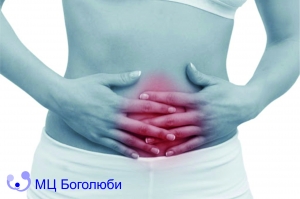Adhesions - are strips of fibrous scar tissue that abnormally connect parts of the same organ or contact different organs. They can form anywhere, but are most often found between the abdominal and pelvic organs.
Causes of adhesions
The adhesion process is a consequence of the restoration mechanism that is activated after tissue damage: operations, infections, severe blunt injuries, inflammatory conditions, and the effects of radiation.
The formation of adhesions depends on regenerative processes, which by their nature are not very accurate. Reparative cells “«to know», where to act, but they are not able to «recognize» parts of an organ or two separate organs and tissues.
Types of adhesions
There are various types of adhesions. Distinctive criteria for them are the location of organs and tissues. The most common: abdominal, hip, pericardial. Less common: epidural, tendon and commissures of the shoulder capsule.
Abdominal adhesions form on the organs and tissues of the abdomen. In this case, both the anatomy of the involved organ and its function are changed. Most often, the intestines are drawn into the process. This organ is at risk of adhesions due to its special structure. The intestine is a long cylinder with multiple folds and common points of contact even for far-off sites. Approximately 90% of cases of abdominal adhesions are due to prior surgery. The remaining 10% is a consequence of:
- severe gastroenteritis;
- ulcerative colitis;
- congenital malformations of tissues;
- sexually transmitted diseases such as gonorrhea, chlamydia.
Usually abdominal adhesions are asymptomatic. However, if they affect a sensitive organ or tissue, they can cause abdominal pain.
Hip adhesions affect the pelvic organs: bladder, urethra, uterus, fallopian tubes, vagina, ovaries, prostate, seminal vesicles, and vas deferens.
In order of importance, the main causes of adhesions at the pelvic level are pelvic surgery, endometriosis and pelvic inflammatory disease.
Pelvic adhesions cause specific pain sensations, more commonly known as chronic pelvic pain syndrome. This pain occurs due to compression of the nerve or stretching of the organ with strips of fibrous-scar tissue.
In some cases, pelvic adhesions are fraught with complications such as infertility and ectopic pregnancy. Adhesions in the uterus or vagina can cause pain during sexual contact.
Diagnosis and treatment of adhesions
For diagnosis in the Bogoliuby MC diagnostic laparoscopy is applied.. This is a minimally invasive surgical technique that allows you to view the inner surface of the abdominal-pelvic cavity using small incisions. The method most accurately visualizes adhesions and estimates the severity.
If necessary, an ultrasound or MRI of the pelvic organs can be additionally prescribed. Differential diagnosis is carried out in relation to inflammatory processes and neoplasms.
The therapeutic strategy depends on the location and prevalence of the adhesive process. Elimination of pelvic and abdominal adhesions requires surgical intervention - laparoscopy or laparotomy.
With timely treatment, pelvic and abdominal adhesions have a favorable prognosis. After excision of adhesions, pain is reduced. Also, the goal of the intervention may be to restore the patency of the fallopian tubes, which in the future.
















